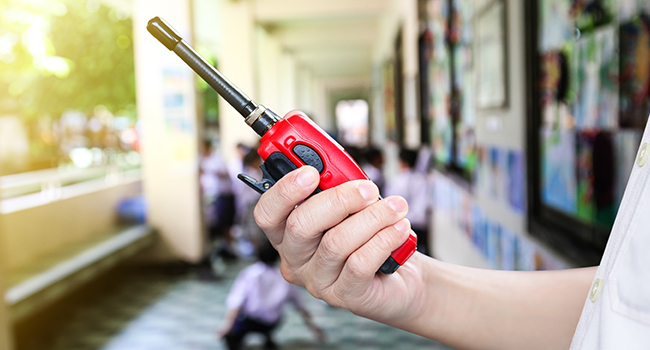
NY School Uses New Walkie-Talkies for Security
Clarkstown Central School District Superintendent Marty Cox said the district purchased about 360 Motorola walkie-talkie radios for use across the district’s 13 schools.
- By Jessica Davis
- November 28, 2018
School resource officers and staff at Clarkstown Central School District are now using hundreds of walkie-talkies to help improve school safety and security.
The walkie-talkies were funded in part by $40,000 in state funding secured by Senator David Carlucci following several school shootings. In total, the district invested about $200,000 for the system, which allows staff members and school security to communicate more easily in case of an emergency.
According to security officials, walkie-talkies and radios are more reliable, durable and functional than cell phones in an emergency. In case of a dangerous situation, a cell phone could drop a call or not function due to a school dead zone or dead battery. Walkie-talkies allow users to quickly alert everyone on a channel at once, and have a longer battery life than a cell phone.
"Sadly we need our schools to be prepared for any type of emergency. In 2018, there were 87 school shootings, and since 1970 school shootings have claimed 716 lives. Seconds matter in an emergency, and we want school staff to have every safety tool at their disposal," Carlucci said.
Clarkstown Central School District Superintendent Marty Cox said the district purchased about 360 Motorola walkie-talkie radios for use across the district’s 13 schools. The district began using the radios at the beginning of this school year.
"Safety is our top priority, and communication that is done effectively in the schools will keep our students safe," Cox said.
About the Author
Jessica Davis is the Associate Content Editor for 1105 Media.